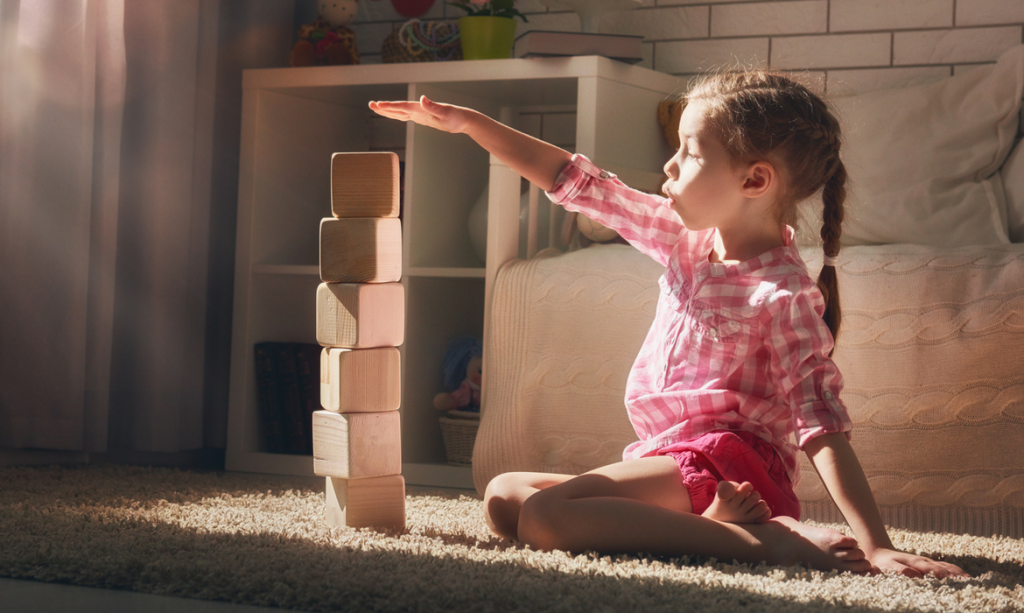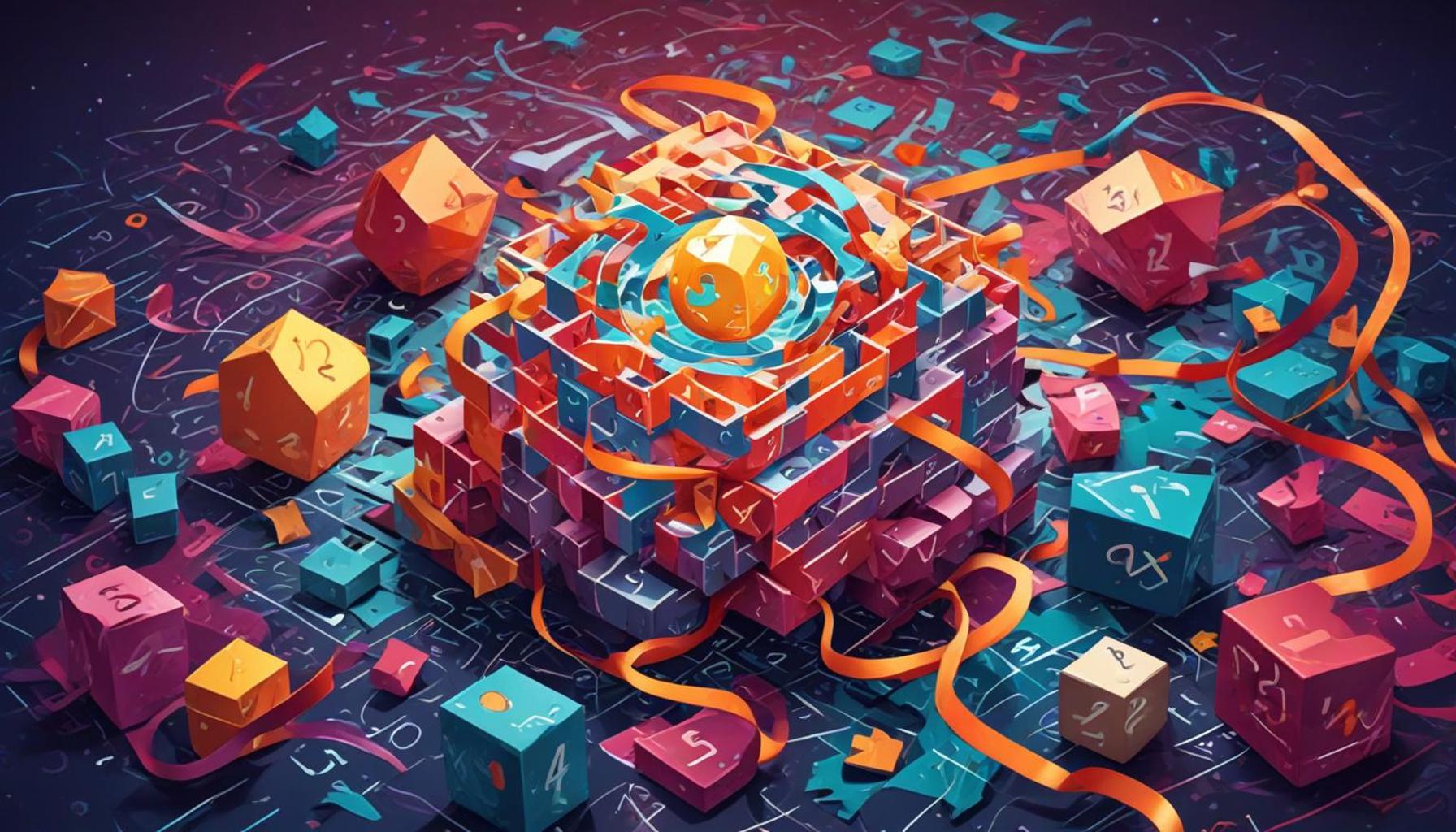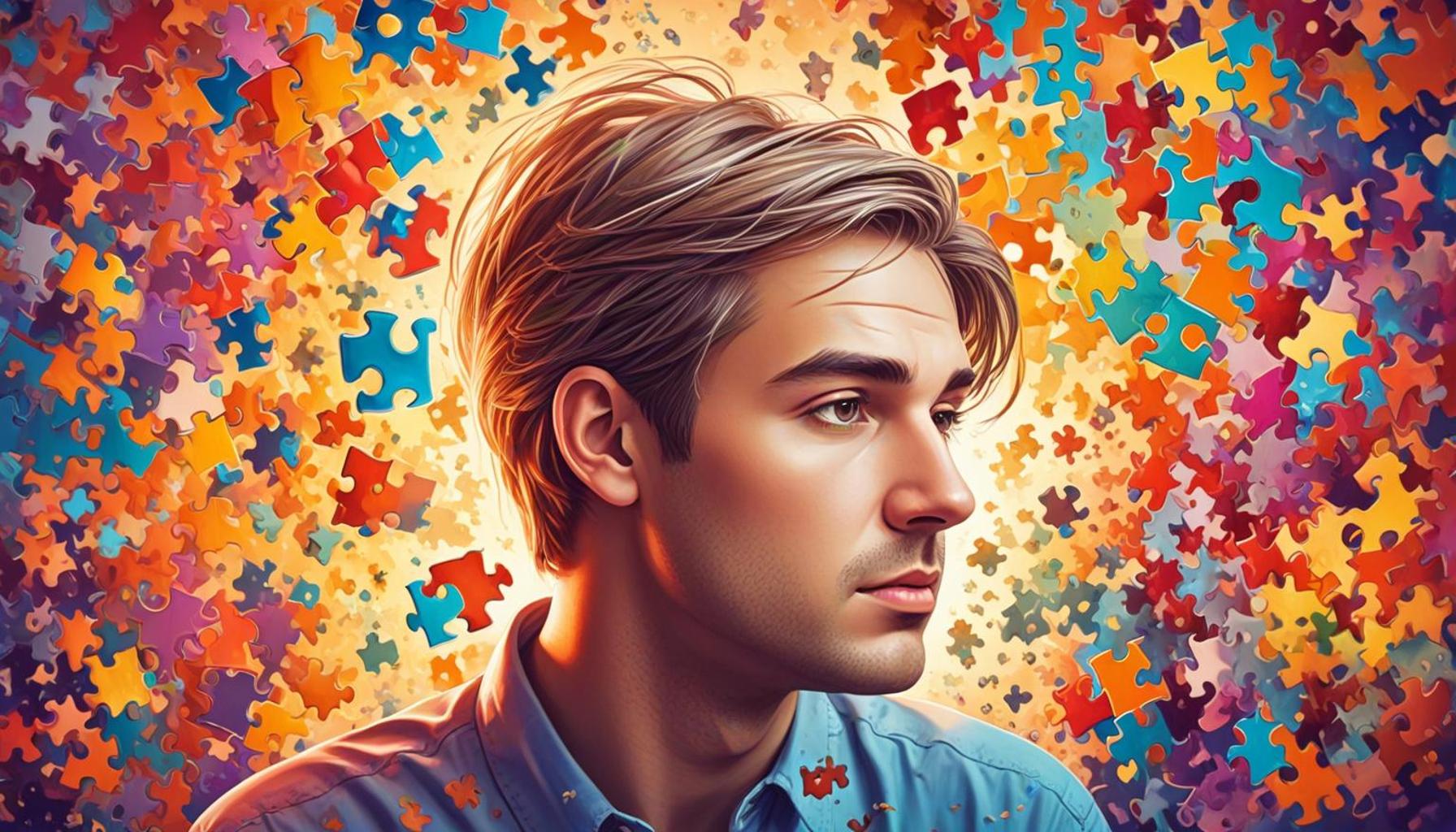The Relationship Between Visual Puzzles and the Development of Spatial Perception

Understanding Visual Puzzles
Visual puzzles have captivated minds across cultures, offering a blend of challenge and enjoyment. These enigmatic tasks are more than just entertainment; they also play a critical role in enhancing spatial perception, a skill that is fundamental to our interaction with the world around us. From arranging furniture to navigating streets, the ability to understand spatial relationships is integral to daily life.
The Significance of Spatial Perception
Spatial perception is the ability to comprehend the position and relationship of objects in space. This skill is fundamental in various aspects of life, including:
- Problem-solving in mathematics: Many mathematical concepts, such as geometry, rely heavily on visualizing shapes and understanding their spatial relationships. Mastery of spatial skills can lead to greater success in subjects that require these capabilities.
- Navigation in unfamiliar environments: Whether in a bustling city like Lagos or a rural area in the Niger Delta, being able to efficiently navigate one’s surroundings depends on spatial awareness. Understanding distances, directions, and the layout of an area makes it easier to explore and feel comfortable in new places.
- Artistic expression and design: Artists and designers use spatial perception to create aesthetically pleasing arrangements in their work. They must visualize how elements fit together, be it in a painting, sculpture, or architectural design, which showcases the importance of this ability in creative endeavors.
Visual Puzzles as Learning Tools
Engaging with visual puzzles is not just a fun pastime; it also enhances cognitive skills significantly. Noteworthy types of these puzzles include:
- Tangrams: An ancient Chinese puzzle consisting of seven flat pieces called tans. Players rearrange these pieces to form a specific shape, fostering an understanding of geometry and spatial relationships.
- Jigsaw puzzles: Popular across generations, jigsaw puzzles require players to visualize how interlocking pieces come together to create a coherent image. This encourages critical thinking and patience.
- 3D brain teasers: These puzzles challenge the three-dimensional spatial skills of individuals, asking them to solve problems involving physical representations. They are especially effective for engaging young minds in a fun way.
Each type of puzzle provides a unique challenge, stimulating the brain and fostering enhancements in spatial perception. These activities not only entertain but also serve educational purposes.
Cross-Cultural Impact
In Nigeria, traditional games often incorporate elements of puzzles, reflecting the cultural significance of these activities. Games such as Ayo or Ludu introduce strategy and spatial awareness in a social setting, thus nurturing problem-solving skills among players from a young age. Understanding how visual puzzles relate to these skills can lead to greater cognitive development within education systems and inform approaches to teaching in local schools.

With an increasing interest in cognitive training, especially in a rapidly developing society like Nigeria, exploring the relationship between spatial skills and visual puzzles can lead to effective strategies for skill enhancement. This presents a compelling opportunity for educators and parents alike to delve deeper into the fascinating world of visual puzzles, unlocking new pathways for learning and development.
ADDITIONAL INSIGHTS: Expand your understanding here
The Cognitive Mechanics Behind Spatial Perception
The intricate relationship between visual puzzles and the development of spatial perception underscores the power of cognitive engagement. Spatial perception is not just an innate ability; it can be nurtured and developed. Engaging with visual puzzles stimulates crucial areas of the brain responsible for processing spatial relationships and enhancing mental imagery. This is particularly relevant within the Nigerian context, where educational methods are increasingly incorporating interactive learning environments.
The Brain’s Response to Visual Puzzles
Research indicates that solving visual puzzles activates various cerebral regions, especially those involved in visual processing and spatial reasoning. Neuroscientists have discovered that engaging in these cognitive challenges can lead to improvements in both short-term and long-term spatial skills. When individuals solve puzzles such as tangrams or 3D brain teasers, they are not merely completing tasks; they are training their brains to recognize patterns, understand dimensions, and manipulate objects mentally.
Types of Spatial Skills Enhanced by Visual Puzzles
Visual puzzles enhance several crucial spatial skills through interactive play, each contributing significantly to both academic and everyday competencies. Some of these skills include:
- Visualization: The ability to imagine and manipulate objects in a three-dimensional space is fundamental in disciplines like architecture and engineering. Puzzles that require users to assemble parts or visualize completed forms foster these critical skills.
- Attention to detail: As puzzles often involve closely examining pieces and understanding intricate designs, this activity sharpens one’s ability to focus on minute details, which is essential in both artistic and analytical tasks.
- Problem-solving: Visual puzzles encourage innovative thinking by challenging individuals to come up with multiple solutions. This flexibility is essential in real-life scenarios, from steering a business venture to resolving interpersonal conflicts.
Additionally, the communal aspect of playing puzzles, especially in a diverse society like Nigeria, can foster collaboration and enhance learning through group dynamics. The joy of solving puzzles, coupled with competition and teamwork, makes it an effective tool for educational purposes, inculcating important life skills alongside the development of spatial awareness.
The Role of Technological Advancements
In today’s digital age, the evolution of visual puzzles extends to online platforms and apps that gamify these learning experiences. These modern tools provide an accessible means for both children and adults to develop spatial perception skills while indulging in dynamic and engaging formats. For instance, mobile applications featuring 3D puzzles offer instant feedback, progressively challenging users as their spatial abilities improve. This adaptation is especially pertinent in urban settings across Nigeria, where technology is reshaping educational engagement.
By embracing visual puzzles as integral components of cognitive development, individuals can refine their spatial perception, bridging the gap between traditional learning and modern educational practices. The relationship between these puzzles and spatial skills is profound and multifaceted, inviting further exploration and incorporation into everyday learning environments.
| Advantages of Visual Puzzles | Impact on Spatial Perception |
|---|---|
| Enhanced Problem-Solving Skills | Visual puzzles stimulate cognitive development and improve critical thinking abilities. |
| Increased Visual Memory | Engaging with puzzles can enhance visual-spatial memory, leading to better navigation and understanding of environments. |
| Boosts Creativity | Puzzles encourage innovative thinking by requiring players to visualize solutions in non-linear ways. |
| Strengthens Attention to Detail | Working through visual challenges sharpens the ability to notice and remember fine details, essential for effective spatial awareness. |
Exploring the intricate bond between visual puzzles and the development of spatial perception reveals compelling insights. As individuals navigate increasingly complex environments in daily life, the skills sharpened through puzzle-solving become vital. For instance, puzzles demand an individual to visualize how different pieces fit together, mimicking the spatial reasoning required in areas like architecture, engineering, and even navigating urban settings.The clear connection between visual puzzles and enhanced spatial skills offers promising implications for education and therapeutic practices, especially in fields such as psychology and cognitive rehabilitation. Furthermore, the shift towards screen-based puzzles in the digital age raises questions about how technology influences spatial reasoning compared to traditional hands-on puzzles. Investigations continue into how the medium of interaction impacts the development of these crucial cognitive skills. By delving deeper into the richness of this relationship, one uncovers pathways to foster both cognitive growth and practical skills in real-world situations.
CHECK OUT: Click here to explore more
The Cultural Impact of Visual Puzzles on Spatial Awareness
As Nigeria embraces a more interactive educational landscape, the cultural significance of visual puzzles is taking center stage. Beyond their cognitive benefits, puzzles also resonate deeply within the community, reflecting shared experiences and values. Traditional games akin to puzzles, such as ayo and ludu, are not merely forms of entertainment but communal activities that enhance spatial skills in storytelling formats, where participants visualize moves and outcomes in their minds.
The Value of Cultural Context in Developing Spatial Skills
The incorporation of visual puzzles into Nigerian culture presents a unique opportunity to leverage local traditions while fostering spatial awareness. When children engage with culturally relevant puzzles, the scenarios they navigate are often infused with familiar themes, enhancing their cognitive connections. This cultural context enriches their problem-solving abilities, making learning both relevant and enjoyable. Teachers can utilize these puzzles to address spatial concepts in mathematics and science, making subjects more relatable through culturally grounded examples.
Moreover, the collaborative nature of these traditional games fosters cooperation and communication among participants. This is crucial in developing not just spatial skills, but social ones, as players are often required to discuss strategies and negotiate moves, deepening their understanding of both teamwork and competition.
Expanding Accessibility Through Educational Programs
The Nigerian education system has increasingly recognized the need to incorporate visual puzzles into learning environments to develop spatial perception. Programs that focus on hands-on learning and interactive play can bridge the educational gap often experienced in formal settings. Initiatives tailored towards introducing visual puzzles in classrooms encourage children to explore geometric shapes, patterns, and spatial relationships in a fun, stimulating way.
For instance, schools in urban centers might utilize virtual reality (VR) technology, where students can engage in 3D puzzle environments that enhance their spatial reasoning skills. Such technology not only captivates modern learners but also supports traditional teaching methodologies by introducing a blended learning experience. By utilizing visual puzzles that cater to various learning styles, educators in Nigeria can create inclusive, dynamic classrooms that prioritize cognitive development.
Evidence from Global Studies
Globally, studies have indicated that engaging regularly with puzzles significantly increases spatial competence. A landmark study conducted in the United States found that children who regularly participated in puzzle-solving activities scored higher in spatial reasoning tests compared to their peers who did not. These findings highlight the effectiveness of visual puzzles as tools for skill development, emphasizing their relevance across various educational frameworks worldwide, including Nigeria’s.
The diverse landscape of Nigeria, with its rich array of cultures and languages, presents a unique canvas for implementing visual puzzles in educational contexts. Combining traditional games with modern educational techniques can enhance spatial cognition while celebrating Nigeria’s heritage. To harness this potential, educators and policymakers must prioritize the integration of visual puzzles into the learning curriculum, ensuring that spatial perception development remains at the forefront of educational innovation.
ADDITIONAL INSIGHTS: Expand your understanding here
Conclusion: The Path Forward for Spatial Perception Development
The relationship between visual puzzles and the development of spatial perception has emerged as a fascinating nexus within educational research. As highlighted throughout this article, visual puzzles, whether traditional or modern, serve as vital tools that engage cognitive processes in ways that transcend mere entertainment. In Nigeria, where cultural heritage intertwines with educational innovation, the incorporation of local puzzle games into the curriculum offers profound implications for enhancing spatial awareness in students.
From the age-old games of ayo and ludu to cutting-edge VR experiences, the spectrum of visual puzzles not only boosts spatial skills but also fosters critical social interactions among learners. These communal activities encourage teamwork and communication, essential components in both personal and academic development. The evidence from global studies further supports their efficacy, revealing that consistent engagement with puzzles can lead to measurable improvements in spatial reasoning.
As educational frameworks in Nigeria and beyond evolve, it is crucial for educators and policymakers to recognize the substantial impact of visual puzzles on cognitive growth. By prioritizing the integration of these impactful tools into learning environments, especially in areas where access to resources might be limited, we can create rich educational experiences that celebrate cultural heritage while enhancing students’ spatial abilities.
Ultimately, the journey to foster spatial perception through visual puzzles is not merely about play; it is about preparing a generation of learners equipped to navigate an increasingly complex world. The potential for growth is immense, and by embracing these strategies, we can lay the groundwork for innovative educational paradigms that resonate with the unique contexts of Nigerian society and beyond.


